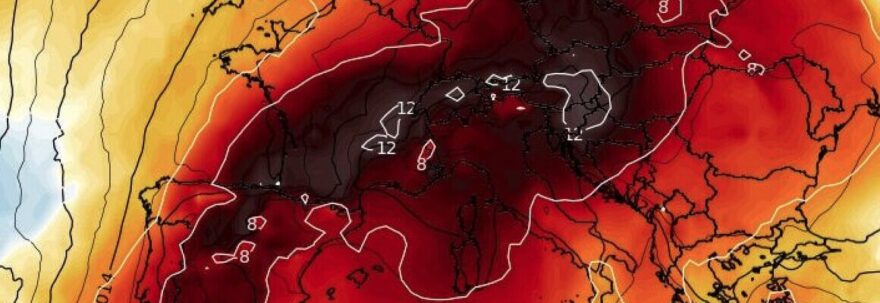Four Spanish cities are among the ten European cities where climate change has most influenced temperatures over the last year. According to a study, the citizens of Madrid, Barcelona, Valencia and Zaragoza have been the ones who have spent the most days under unusual temperature values.
The study carried out by Climate Central has analyzed the average daily temperature between October 1, 2021 and September 30, 2022 around the world, including more than 1,000 cities. In addition, it calculated the probability that this temperature would occur on a planet with 1.1 ºC of global warming and contrasted it with the probability that the same temperature would occur in a climate without climate change. The difference has given rise to a ranking with the cities most affected by temperatures that would never have been reached without climate change.
On the European continent, Spain is listed as one of the countries with the most affected cities. Madrid is the third city with the most days with a temperature above normal, only behind Valletta (Malta), with 77 days of temperatures influenced by climate change, and Longyearbyen (Norway), with 72. In the Spanish capital were 66 days, that is, 18% of the days of the last year. Following the capital are Valencia (59 days), Zaragoza (58) and Barcelona (53). Global warming, on the other hand, was hardly noticed in Seville, where it only had an influence for 17 days.
At a global level, those located near the Equator and small islands stand out as the most affected. Mexico, Brazil, West and East Africa, the Arabian Peninsula and the Malay Archipelago experienced the greatest influence of climate change on temperatures. Apia, in Samoa, suffered up to 331 days out of 365 with temperatures above average, followed by Ngerulmud (Palau) with 328 and São Jorge (Grenada) with 309.
The planet is already at 1.1 ºC of global warming over pre-industrial times and United Nations projections suggest that warming will continue to increase between now and the end of the century, reaching around 2.5 degrees. But “people do not experience global average temperatures. We experience climate change through changes in daily temperatures and weather patterns where we live,” the authors explain. The higher the global temperature, the more likely extreme events such as powerful heat waves, floods or hurricanes will be. For example, extreme heat in early July was up to five times more likely due to climate change, according to Climate Central.
At a global level, the report highlights that in the last 12 months, man-made climate change affected the temperatures experienced by 7.6 billion people (96% of the world’s population).



